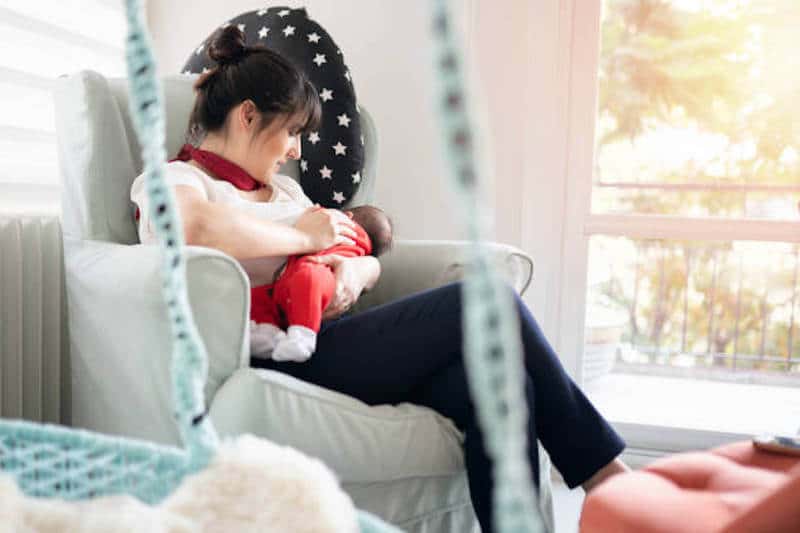Understanding Your Baby’s Reflexes And How They Promote Development
As a new parent, it’s important to understand that your baby is born with a set of reflexes that promote their development. These reflexes are automatic responses to certain stimuli and are crucial for survival in the first few months of life.
Understanding them can help you bond with your baby, stimulate their learning and development, and ensure they are meeting important milestones.
Note: This post may contain affiliate links, which means if you buy from my link I might make a small commission. This does not affect the price you pay. See the full affiliate disclosure here.
By getting to know your baby’s reflexes, you’ll be better equipped to respond to their needs and provide the right kind of stimulation at the right time. From rooting and sucking to grasping and startle responses, these reflexes play a critical role in helping your baby adapt to their new environment outside of the womb.
So if you’re looking for ways to support your little one’s growth and development in those early months, read on as we explore some common infant reflexes and how they contribute to healthy development.

Overview of Baby Reflexes
Get ready to learn about all the automatic movements your little one does! Reflexes are involuntary or automatic movements that babies make in response to certain stimuli. These reflexes are present at birth and help your baby survive and thrive.
Some common reflexes include the rooting reflex, which helps your baby find the breast or bottle for feeding, and the Moro reflex, which causes your baby to startle in response to sudden movements or loud noises.
As your baby grows and develops, these reflexes will begin to fade away as they gain more control over their movements. Understanding these early reflexes is important because they can give you insight into your baby’s development milestones.
In fact, some of these early reflexes can have an impact on learning later on. For example, the grasp reflex can eventually lead to fine motor skills such as writing or playing an instrument. By understanding how these automatic responses work, you can better support your child’s development and growth.
Rooting Reflex
The rooting reflex helps infants find and latch onto their mother’s breast for feeding. When a baby’s cheek is touched or stroked, they’ll turn their head towards that direction with an open mouth, ready to suckle.
This reflex is essential for newborns who rely on breast milk or formula for nourishment. Aside from facilitating breastfeeding, the rooting reflex also promotes oral stimulation and strengthens the muscles in a baby’s face and jaw. It trains them to coordinate sucking, swallowing, and breathing while also developing their sense of taste and smell.
Parents can help enhance this reflex by practicing proper breastfeeding technique and creating a comfortable environment free from distractions. By providing opportunities for babies to practice their rooting reflex early on, parents can support healthy development in their infants that will benefit them throughout life.

Moro Reflex
The Moro reflex, also known as the startle reflex, is a primitive reflex that all babies are born with. When a baby feels a sudden movement or noise, their arms and legs fling outward and then come back in towards their body. This reflex usually disappears around 3-6 months of age.
The Moro reflex is important for a baby’s development because it helps them to develop their balance and coordination skills. As they get older, they’ll be able to control this reflex and use it to help them maintain their balance when they fall or stumble.
It’s important for parents to understand this reflex so they can help their baby feel secure during moments where it may be triggered, such as when putting them down for a nap or picking them up from the crib. Understanding your baby’s Moro reflex can not only promote healthy development but also provide comfort and security for your little one.
Palmar Grasp Reflex
You’ll notice that your little one has a strong grip when they grasp onto your finger, thanks to the Palmar Grasp Reflex. This reflex is present from birth and allows babies to grip objects with their hands.
It’s an important part of their early development as it helps them explore their environment by grasping and pulling things towards them. As your baby grows, you’ll see their hand strength improve as they learn to grasp larger objects like toys or even food.
This improvement in hand strength is essential for achieving developmental milestones such as crawling, standing, and eventually walking. Encouraging your baby to practice grasping different objects can help strengthen their hand muscles and promote further development.
So next time you feel your little one’s tight grip on your finger, remember that it’s not just cute – it’s a sign of growing strength and progress in their development.
Tonic Neck Reflex
When your baby turns their head to one side, you may notice that their arm on that same side straightens while the opposite arm bends. This is known as the tonic neck reflex.
This reflex plays an important role in visual and motor development by helping your baby learn to coordinate their movements and track objects with their eyes.
Understanding this reflex can give you insight into your baby’s development and help you support them as they grow and learn.

Definition and Explanation
Take a moment to learn about how your little one’s unconscious movements are aiding their growth and learning. One of the reflexes that babies exhibit is called the Tonic Neck Reflex. This occurs when your baby turns their head to one side, causing their arm on that side to extend while the opposite arm flexes at the elbow joint. This reflex is also known as ‘fencing posture’ due to its resemblance to a fencer’s stance.
As a parent, it can be fascinating and emotional watching your baby develop these automatic movements. It’s incredible to think that these reflexes play an essential role in promoting motor development and learning in infants.
The Tonic Neck Reflex helps establish hand-eye coordination by encouraging your baby to reach out for objects that catch their attention. Additionally, this reflex aids in strengthening neck muscles needed for holding up the head and helps prepare them for crawling later on down the road.
Importance in Visual and Motor Development
Now that you understand what reflexes are and how they work, let’s talk about their importance in your baby’s visual and motor development. Reflexes play a crucial role in helping your baby reach important milestones, such as crawling, walking, and grasping objects.
One of the most essential reflexes for your baby’s visual development is visual tracking. This reflex allows your baby to follow moving objects with their eyes and develop hand-eye coordination. As they grow and mature, this ability will help them recognize faces, track toys, and eventually learn to read.
Another key reflex is the Moro reflex, which helps babies develop balance and spatial awareness by reacting to sudden movements or noises.
By understanding these reflexes and encouraging them through play and interaction with your baby, you can support their progress towards reaching developmental milestones.
Conclusion
Understanding your baby’s reflexes and how they promote development, you can better support your little one’s growth and help them reach important milestones.
Remember, reflexes are automatic responses that babies are born with. The rooting reflex helps them find food, while the Moro reflex protects them from falls. The palmar grasp reflex allows them to grip objects, and the tonic neck reflex helps with eye-hand coordination.
By observing these reflexes in action, you can get a glimpse into your baby’s developing nervous system. Plus, by gently stimulating and encouraging these movements through playtime and tummy time, you can help your baby strengthen their muscles and refine their motor skills.
Overall, understanding your baby’s reflexes is an important part of parenting. With patience and attention to detail, you can provide a supportive environment that fosters healthy growth for years to come.






